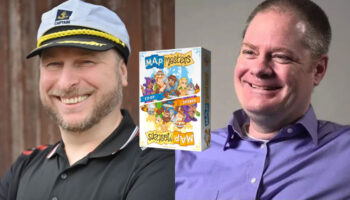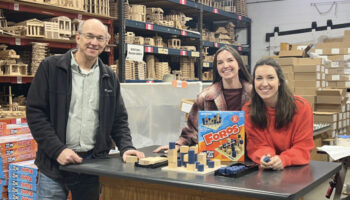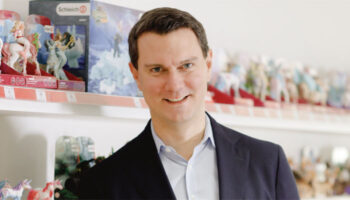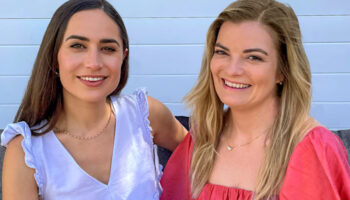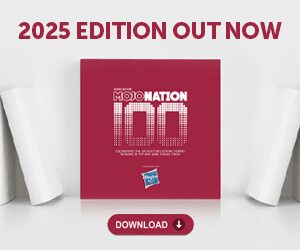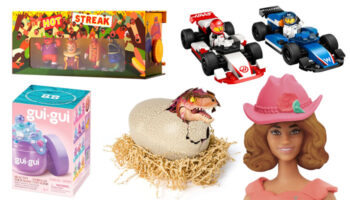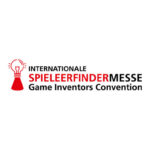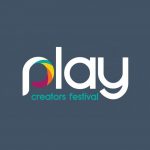Scheme, steal and second-guess: Game designer David Gordon talks Pinched!

David, it’s great to catch up. We’re here at Essen with one of your new launches – Pinched!, published by Mighty Boards. What’s the origin story here?
I was really interested in this idea of trying to read your opponent’s mind – or Princess Bride-ing it as I called it! I’ve played with that in a few different games, but here it was all about: If I go to a location on the board, can you guess where I’m going? In order to make that work, you need some compelling reasons as to why you might think I’d go here or there – so my cards have to be face-up so you can guess my motivations.
You’re clearly collecting Wealth cards, there’s a few Wealth cards over there – so you’ll likely go there.
Exactly… But maybe I’ll be sneaky and go somewhere else because I know that you know that I’m collecting Wealth.
Exactly! Guessing and second-guessing galore! And in Pinched!, we’re all playing as thieves collecting different sets of valuables. On your turn, if I can guess where you’re going to rob, we split the loot. But if you manage to go somewhere alone, you pocket the lot!
That’s right!

And was this heist theme there from the beginning?
No, my son actually had the idea to set this underwater, so it was called Sea Lab for the longest time.
Oh!
You were going down to different depths – the abyss or the sea floor or the trench… Then it was with a publisher for a while and they were trying to attach an IP to it. Then the IP opportunity fell through, and that’s when Jonathan and I took it to Gordon Calleja and David Chircop of Mighty Boards. It resonated with them immediately and they signed it within a month. That when they changed the theme to Pinched and everything fell into place perfectly.
Lovely. And while the board and components are beautiful, a lot of the fun of this game in the conversations between players. Telling the group what you’re going to do and seeing if they buy it… Bluffing… It’s a very accessible, social game. So my question is, how do you work out how complex, or simple, a game is going to be?
To be honest, it often feels like I’m not consciously making that decision. Sometimes the game tells me where it wants to go. Sometimes you change your design brief to follow where the fun is… If you follow where the interesting decisions are, that will usually tell you what the game wants to be.
Sometimes I’ll set out with a goal – I want to design a light card game. The goal might be to get the lowest score… Now while developing that, it might take a more ‘thinky’ turn and evolve into something different than I intended – but something more interesting! So you have to be flexible and willing to see where the idea takes you.

Pinched! is a collaboration with Jonathan Gilmour-Long, and you’ve got plenty of inventor collaborations under your belt. LEGO Monkey Palace with TAM, Finspan with Michael O’Connell…What makes for successful inventor partnerships?
It’s a good question. I’ve done a lot of co-designs with TAM – we have daily meetings and with most ideas I’ll typically go to TAM first. I used to do a lot more of that with Jonathan Gilmour-Long, my Pinched! co-designer, but he got a job at a company so he can’t do as much co-designing these days. But everything I do now is a collaboration with other designers because the most exciting part of this is coming up with a new idea and seeing it develop. Playtesting, getting feedback, debriefing that feedback – it’s all great – but when you do that with someone else, I find the process is much more pleasant and much more efficient. Your co-designer can see things you don’t see and vice-versa.
And you’ve had a big couple of years, with launches including Pinched!, LEGO Monkey Palace, Floristry, Push Push Penguin, Crafting the Cosmos… What do you put that down to?
First I would say that I feel extremely fortunate because I don’t think there’s anything necessarily special about my designs or me as a designer. I think a lot of it is right place right time.
I really focus on the process – iterate, debrief, playtest, iterate, debrief, playtest… It’s a development cycle that I really love. And I pitch a lot – and it’s worth saying, I pitched hundreds of times before I got anything signed. Then, when you get something signed, you discover that there’s a whole path the game has to navigate before it’s released. So I had plenty of games signed and then pushed back… I felt like I went from the person with the most signed games but nothing released, to the person with the least games released.
Ha! But that’s an important shift, right?
It was a really important step. It was wonderful. So yes, I’ve had several things signed and for whatever reason they all came out in the same couple of years. It’s a bit of a numbers game, but that’s fine because I pitch a lot and love pitching.

Going back to Pinched!, the production values here are terrific. You must be thrilled with how it has come together.
Mighty Boards is incredible. Their investment and commitment to making all of the ludonarrative synergies work – and then the art, design, marketing… I’ve been really fortunate. And to be honest, every single publisher I’ve worked with has done an incredible job.
Yes, LEGO Monkey Palace isn’t a bad looking game either!
Absolutely, I feel very fortunate.
Before we wrap up, what’s still to come from you that we should keep an eye out for?
TAM and I have a game called Scurry Up coming out in the spring. That’s from UP Games – a publisher that I founded alongside Ammon Anderson, designer of Gnome Hollow, and Greg May. Ammon did the art direction and Sandara Tang did the cover illustration. We’re very excited about that one.
And what helps you have ideas for games?
I’m having ideas all the time – it’s like a faucet that I turn off. When I need ideas, I just turn it back on. I’m fortunate to have that ability, but it’s also something that you train and work on. If you just keep it on all the time, you can become overwhelmed with how many games you’re working on… I have 20 games in my bag here that I’m pitching here at Spiel and there are others I’m working on too…
You have to turn that off sometimes to give the current ideas a chance to breathe…
Absolutely. And then, sometimes I’ll wake up from a dream with an idea. Other times it’ll come out of a brainstorm discussion with another designer. I had one of those last week with a really talented designer named Yuval Grinspun, the designer of How to Save a World. Him, Ammon Anderson, and I said: “Let’s make a dice game”. So we just sat around, talked about it and came up with something. So games can come to you in any number of ways, you just have to be open to it.
David, this has been great – big thanks again. And congrats on Pinched! – I’m a fan!
–
To stay in the loop with the latest news, interviews and features from the world of toy and game design, sign up to our weekly newsletter here





